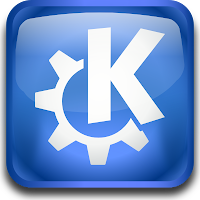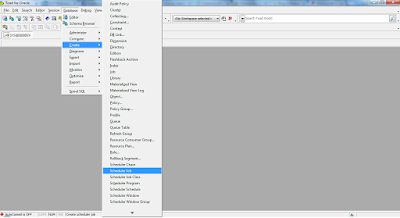Four Most Important Linux GUI's
1) KDE
KDE (Kool Desktop Environment) project was established in October 1996, compared to GNOME even earlier. KDE is a graphical layout tool for project developers Lyx, a German named Matthias Ettrich launched, aims to satisfy the average user through ease of use to manage desktop applications on Unix workstations, software and complete variety of tasks.
In application development, KDE project has developed a first-class compound document application framework, a framework for achieving the most advanced technology and therefore the direct exposure of its own and such as Microsoft MFC / COM / ActiveX technology, competing popular development framework location. KDE's KParts compound document technology enables developers to quickly create a class of applications in order to achieve the most cutting-edge technology.
In the application procedure, KDE also has a can with Microsoft office suite of office applications comparable to KOffice, respectively, from the spreadsheet, slide production program, organizers, press the composition of the client applications. Also integrates a common Web browser, email client, office suite, graphics and video processing software, and desktop theme features, configuration, KDE Help-centered management tools. At the same time, also supports more than 60 languages translated.
Currently, the latest version of KDE 4.5.0 further improves the stability and performance.
2) GNOME
GNOME's structure includes: a panel, desktop and a series of standard desktop tools and a lot of powerful applications. These applications include: document management, electronic forms processing software, the word management software, spreadsheet software, e-mail reader, MP3 player, a simple editor, and comparable with PhotoShop and other image processing software commonly used software.
Meanwhile, GNOME has integrated software updates and management tools, Web-based software distribution and automatic update tool to smooth and safe running the latest open source and download the latest patch.
If you have experienced will know GNOME, GNOME, these applications is how to make Linux systems more feasible, and drag the mouse left key features, edit documents, draw pictures, send and receive mail, audio and video playback, real-time communication tools to chat with you ...... the user experience in Windows, almost no difference.
Although, GNOME first GNU / Linux desktop, but now GNOME is already running on most Unix-system (such as * BSD variants, AIX, IRIX, HP-UX) and Linux systems on almost all. Currently, the latest version is GNOME 2.3.
3) XFCE
Xfce (XForms Common Environment) was founded in July 2007, similar to the commercial graphic environment, CDE, is a Unix operating under the various types of lightweight desktop environment. The first design of the original author Olivier Fourdan XFce is based on the XForms 3D graphics library. Xfce is designed to be used system efficiency, while saving system resources for, to quickly load and run applications.
XFce main characteristic is easy to configure, the process can use the mouse to complete, without need to modify the configuration file code. The latest version of XFce also supports mouse drag and drop, system task management, multi-byte languages, including multi-and other features.
Meanwhile, XFce desktop environment structure includes: a window manager called XFwm, main panel, file manager, the background manager, sound manager and GNOME-compatible modules. In addition, there are many third party applications: text editor, file manager, calendar program, CD and DVD burning program, media player, browser and so on.
Experience the process from the point of view, though, there is no GNOME and KDE application level so high, but the Xfce simple and efficient features, still earned a lot of users. Currently, Xfce latest version is 4.6.2.
4) LXDE
LXDE (Lightweight X11 Desktop Environment) was founded in 2006, primarily for Unix and like Linux, BSD and other POSIX compliant platforms to provide a lightweight and fast desktop environment
Relative to the GNOME and KDE desktop environments these, LXDE is small and exquisite type. LXDE is more focused on practical and lightweight nature, and try to lower their consumption of system resources. Unlike other desktop environment, its components very few dependencies. Instead, the components can operate independently, most of the components do not have to rely on the implementation of other packages and can go it alone.
LXDE uses Openbox as its default window manager, and would like to offer a package built independent of each other's lightweight fast desktop. In addition, LXDE has integrated a number of applications and tools: image viewer, appearance, fonts, themes, management tools, music player, the screen configuration tool, panel management tools, editing tools, system administrators, and resource monitoring and work lightweight file and desktop management programs, etc.
Process from the experiences of view, LXDE does relatively low hardware requirements, and even produced in 1999, the computer can run properly. So, if you have a computer be out to install Linux, then LXDE will be your good choice.







Comments
Post a Comment